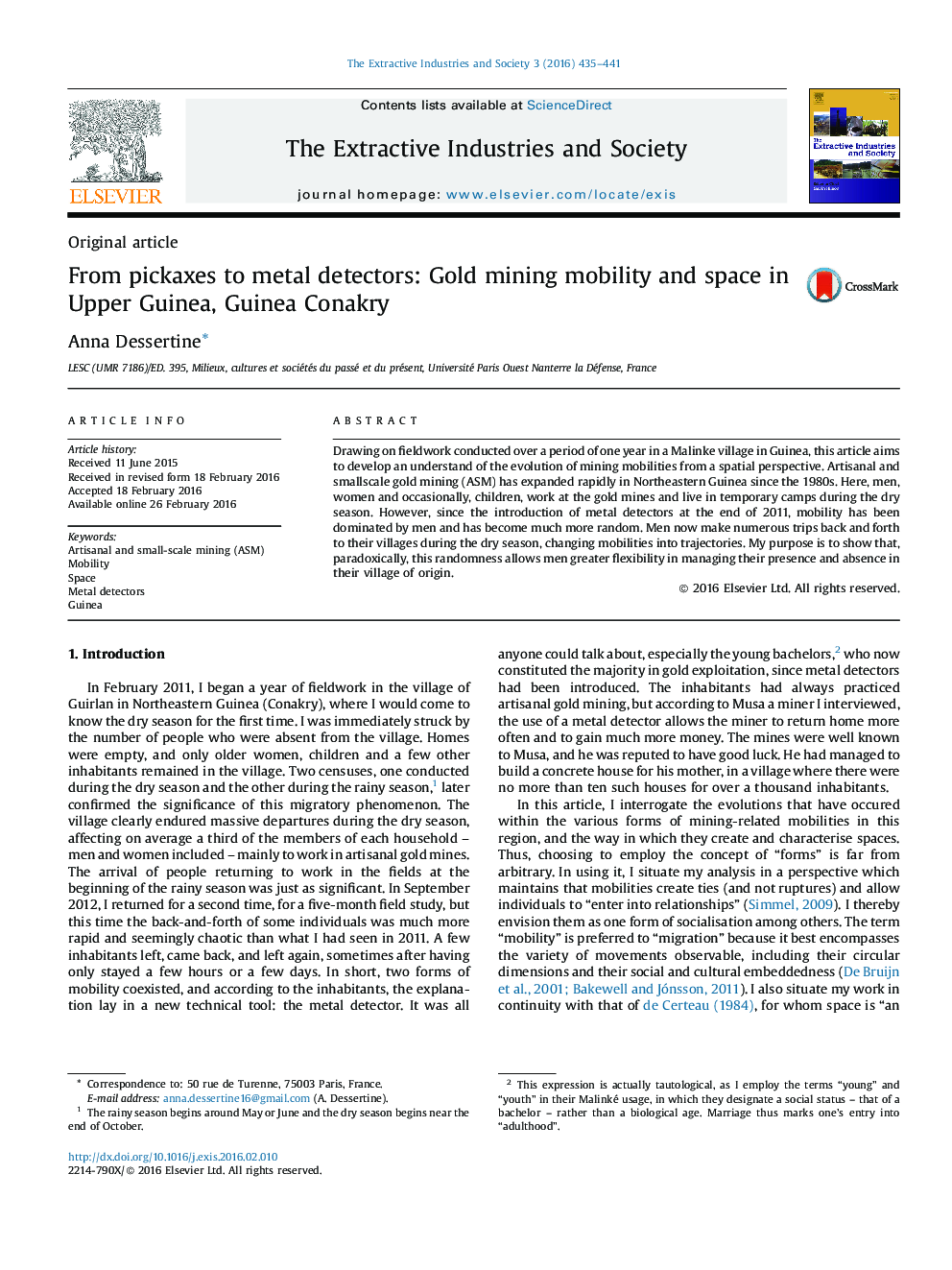| Article ID | Journal | Published Year | Pages | File Type |
|---|---|---|---|---|
| 10502227 | The Extractive Industries and Society | 2016 | 7 Pages |
Abstract
Drawing on fieldwork conducted over a period of one year in a Malinke village in Guinea, this article aims to develop an understand of the evolution of mining mobilities from a spatial perspective. Artisanal and smallscale gold mining (ASM) has expanded rapidly in Northeastern Guinea since the 1980s. Here, men, women and occasionally, children, work at the gold mines and live in temporary camps during the dry season. However, since the introduction of metal detectors at the end of 2011, mobility has been dominated by men and has become much more random. Men now make numerous trips back and forth to their villages during the dry season, changing mobilities into trajectories. My purpose is to show that, paradoxically, this randomness allows men greater flexibility in managing their presence and absence in their village of origin.
Related Topics
Life Sciences
Environmental Science
Management, Monitoring, Policy and Law
Authors
Anna Dessertine,
